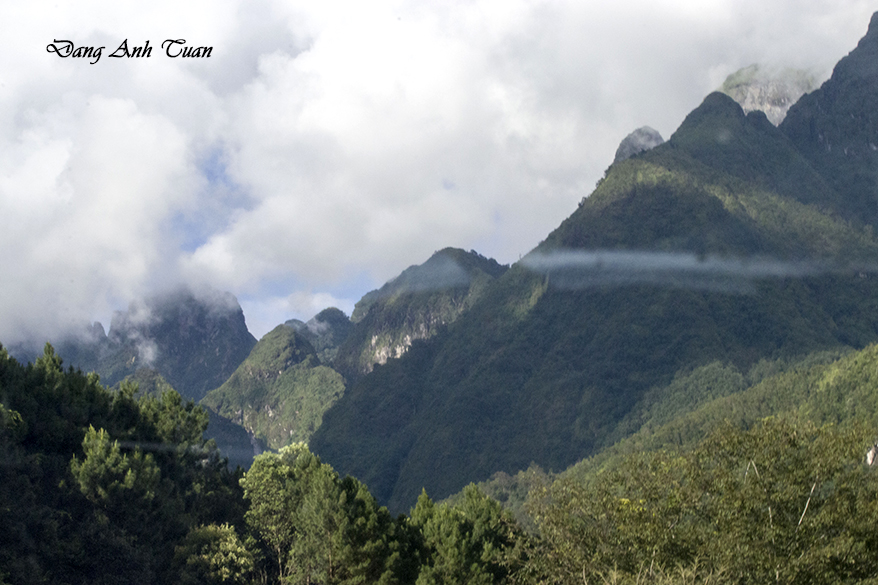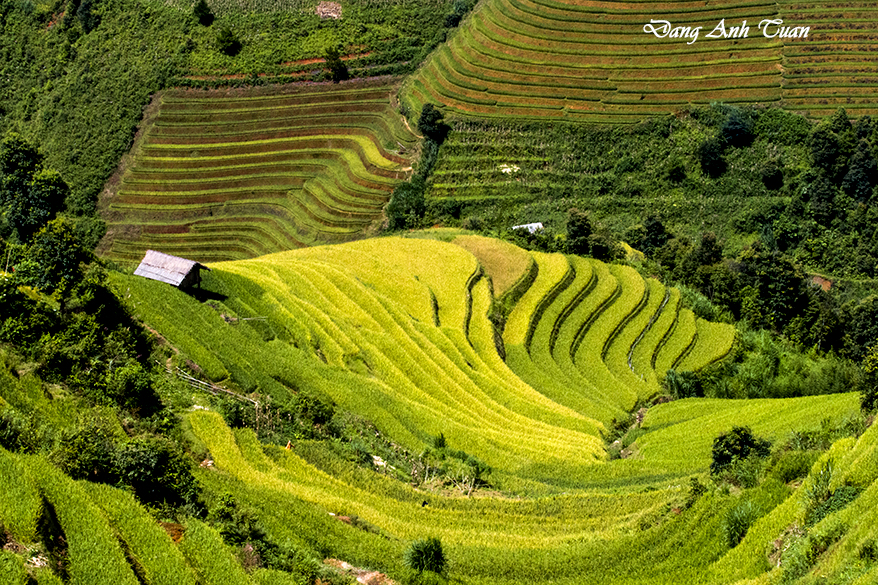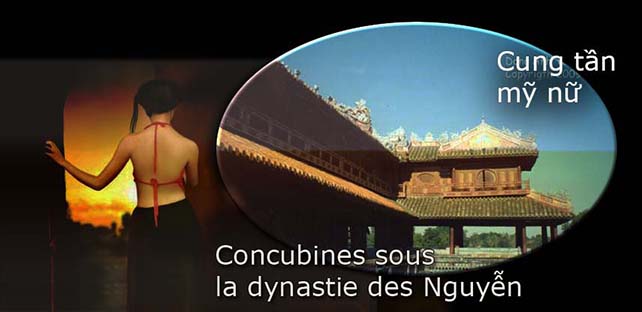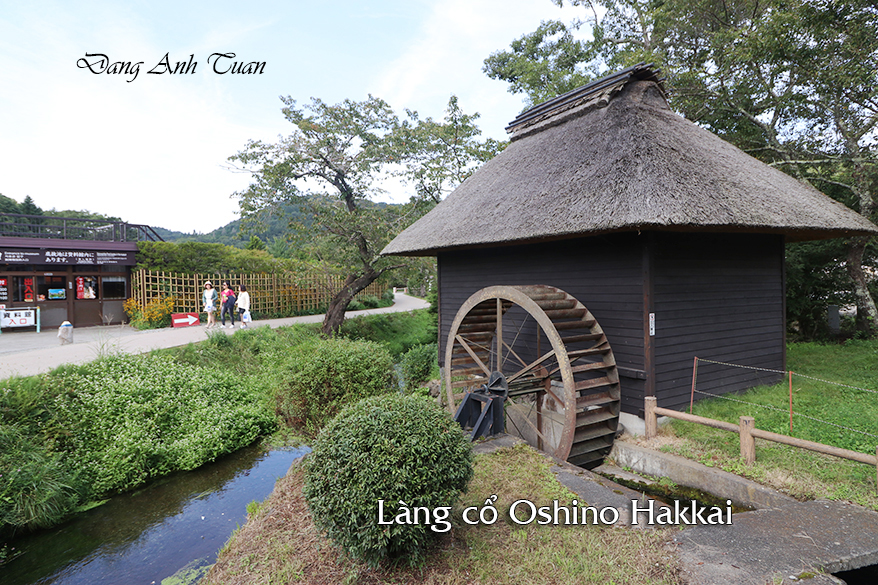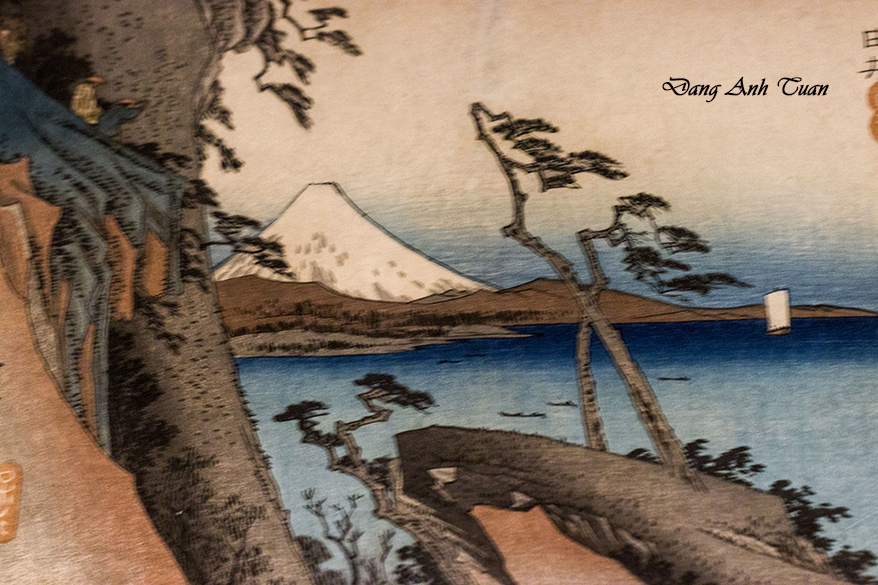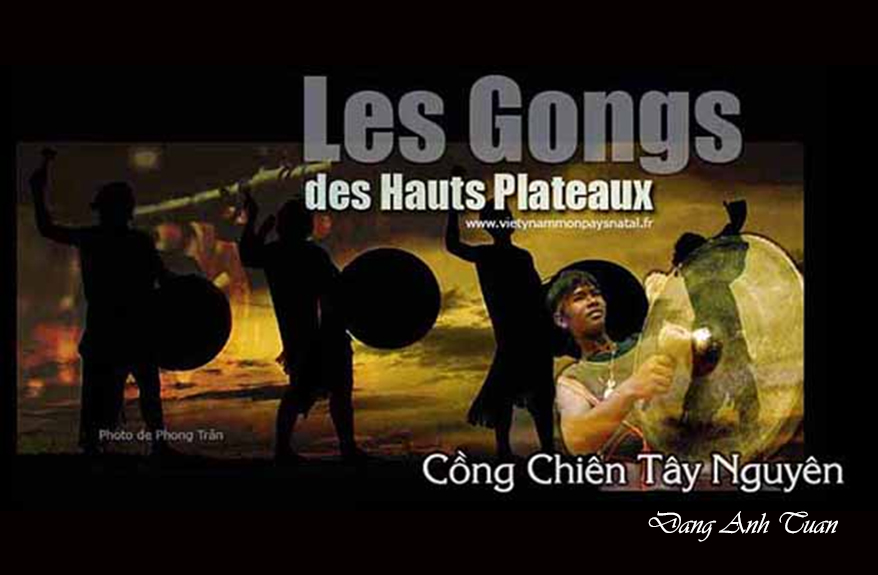Version française
English version
Picture gallery
Rất mất nhiều thì giờ sáng hôm 11/9 để đi Nghĩa Lộ trước khi đến Tú Lệ qua đèo Khâu Phạ. Mưa rơi không ngừng khiến xe không chạy mau và mình cũng không săn ảnh được ở đèo Khâu Phạ. Đến Tú Lệ thì thấy ở ven đường bà con làm cốm đem bán rất nhiều. Vì thế mình mới ghé hỏi mua cốm ăn thử để xem mùi vị nhất là cốm ở đấy nổi tiếng lắm. Bà vợ người Thái đề nghị bán cho mình một kí với giá tiền phải chẳng. Mình cười chỉ mua ăn một tí để xem coi có ngon không mà thôi. Vì thế hai vợ chồng đồng ý bán cho mình một tí với giá 20.000 đồng. Mình nhờ ông chồng tái diễn lại cái màn giã cốm để mình chụp hình. Tiện đó mình mới biết họ là người Thái trắng nên mình mới hỏi ông chồng rằng: Anh, vậy Thái trắng và Thái đen khác nhau chổ nào vậy ? Mình biết họ khác nhau qua cách trang phục. Anh chàng Thái nầy tiếu lâm lắm vừa trả lời vừa cười khác nhau ở cái mông. Mình cười xoè nhìn thấy bà vợ cũng cười. Mình cũng sợ nên không dám hỏi tiếp nửa đấy. Người Thái họ thường ở nhà sàn. Còn người Hmong nhà cửa của họ thường ở cheo leo giữa rừng hoang vắng. Cho đến trưa trời mới tạnh mưa thì cũng là lúc mình chọn một quán cùng cháu tài xế Huân ăn cơm. Ở núi rừng phong cảnh rất hữu tình nhưng về thức ăn khó mà tìm được món ăn vừa khẩu vị lắm. Nguời ở miền núi họ ít có ăn rao cải lắm. Họ ăn có vẽ khô khan lắm khiến thời gian ở miền núi là một vấn đề cho ai thích ăn ngon.
Chạy xe ở miền núi phải cẩn thận vì trâu bò gà vịt qua đường rất thường phải biết né và kiên nhẫn. Cán các con vật nầy thì có lắm chuyện phiền phức vì phải bù đền cho chủ nhân số tiền họ muốn. Đó là điều cần phải biết khi lái xe ở miền núi. Tuy nhiên ở miền núi không bao giờ có chuyện ăn trộm gà vịt như ở thành phố vì người miền núi họ không có gian dối ăn cắp như ở các thành phố. Trời lại chuyển mưa tiếp và sầm uất tối khiến tụi nầy phải tìm kiếm khách sạn mô hình sinh thái mà mình được biết trước địa chỉ khi còn ở Paris tìm qua internet. Trên đường đất mòn cong quẹo không ngừng đến nhà trọ sinh thái nầy, trời nó tối om, đèn không có, một bên là vực thẩm, còn bên còn lại là vách đá còn đằng xa thì có vài cái nhà có đèn leo lét. Mình hơi lo nên cứ hỏi Huân tới chưa hoài. 20 cây số từ ở ngoài thảnh phố đến đây. Khi đến thấy xung quanh nhà trọ sinh thái toàn là các ruộng bậc thang. Xe phải bỏ ở trước cỗng cùng Huân đi bộ vào trong cũng có mấy trăm thuớc mới đến nhà trọ. Tên của nó là: Mù Căng Chải Ecolodge. Đến đây mới biết hết các phòng ngủ riêng chỉ còn phòng ngủ tập thể mà thôi nên mình cũng ok vì quá mệt. (400.000 đồng một giường). Ở nhà trọ nầy, thức ăn cũng giới hạn. Chỉ có hai món: gà xào xã và bò xào ăn vơi khoai. Khách sạn nầy khá sạch sẽ và lúc nào cũng đầy du khách ngọai quốc. Suốt đêm mình cũng hơi lo vì ngày đầu mà mưa như thế nầy tuy rằng đôi khi trời lại nắng có thể săn hình mà chả được là bao nhất là ngày mai theo thời tiết dự đoán 15 ngày trước sẻ mưa nữa vì độ ẩm nó rất cao 80% thôi thì cũng đành chịu .
Sáng lại thấy nắng soi qua hiên cửa mới biết là ngày hôm nay trời rất đẹp, mới biết mình có duyên với mãnh đất nầy. Sau đó còn biết được ở Lã Pán Tấn còn các mâm xôi, lúa chưa chín nên chưa có gặt qua lời kể của cháu hướng dẩn viên của một đoàn người Ý. Chú chỉ đi bộ vài cây số khi đến Lã Pán Tấn thì rồi sẽ gặp các mâm xôi. Vì vậy mình và Huân tìm đường đến Lã Pán Tấn. Đến đây, đậu xe giữa đường vì trên đó không có chổ đậu xe, tìm đường lên đến đồi mâm xôi. Đi hoài chả thấy đồi nào cả mà mình thì mệt vì trên vai lúc nào cũng mang túi xách khá nặng (hơn 5 kilô) nào thuốc nào ống kín và máy chụp ảnh. Thấy hai vợ chồng người Hmong ngồi trước tiệm sửa xe mới hỏi họ nơi nào có mâm xôi. Họ bảo còn xa lắm chú ơi phải đi 8 cây số nữa mới đến mà đường dóc quá cheo leo nhất là trời lại nắng. Mình mới bảo với cháu bé trai người Hmong : chú trả tiền cho tụi con, chở chú lên đó có được không?. Hai vợ chồng trẻ người Hmong vui vẽ bằng lòng chở tụi nầy đi bằng xe gắng máy hai bận đi và về, mỗi người 100.000 đồng.
Mình ngồi xe ôm với người chồng còn cháu tài xế ngồi với cô vợ vì cô nầy theo lời kể của người chồng khi trò chuyện mới biết cô bé nầy yếu tay lái. Mẹ cha ơi lên ngồi mới biết nó chạy xe rất giỏi rất mau với tốc độ mình đoán không lầm chừng cở 50 cây số một giờ mà đường thì quanh co lên dóc xuống dóc không ngừng. Nó chạy xe như cá lội trong nước như rồng trên mây mình thì chưa bao giờ nghỉ ra cảnh nầy quá nguy hiểm. Mình mới nhận ra là nếu có tai nạn thì sẽ chết ngay vì bên cạnh là vực sâu thăm thẵm, đường đất thì còn ướt vì cơn mưa đêm. Mình mới thỏ thẻ với nó con bớt ga lại chú đau tim nhé. Nó rất dễ thương bảo chú đừng sợ con quen chạy đường cả rồi từ thưở bé. Nghĩ lại thấy đúng vì người Hmong thường ở nhưng nơi cheo leo giữa rừng nên họ quen chạy xe rồi. Cũng là cái duyên của mình vì khi lên trên cao mới thấy mênh mông các ruộng lúa bậc thang, mới thấy được cái hùng vĩ của đất nước. Nhờ cháu bé trai Hmong nầy mình mới vào những nơi mà xe không thể tới được. Không có Huân không có cặp vợ chồng người Hmong nầy và nhất là còn tùy thời tiết nửa thì dù có muốn chụp hình cũng không được mà còn tuỳ duyên của mình nữa đấy. Sau đó tụi nầy đi ăn cơm rồi khới hành đi Sapa dọc theo quốc lộ dẫn đến Lai Châu và dãy núi Hoàng Liên Sơn.
Một kỷ niêm khó quên nhất là giữa đường mình xuống xe chạy ngang đường để chụp dãy núi Hoàng Liên Sơn. Lúc đó mình đang mê mẫn chụp hình thì có con rắn dài hơn một thước chạy ngang đường. Huân chạy theo và nắm được đuôi nó. Mình sợ quá mà bảo cháu nên thả nó, nếu không nó mổ là chết vì độc của nó. Huân nói không có sao vì đây là con rắn lục, con thường bắt nó lúc con còn nhỏ ở Ninh Bình để nấu cháo ăn ngon lắm chú. Mình nghe hết hồn thả nó đi con. Huân buôn nó ra thì nó chạy vào bụi cây biến mất.
Với hai ngày ở Mù Căng Chãi, rất thú vị để lại cho mình biết bao nhiêu kỷ niệm của vùng sơn cước.
À cause des travaux de réparation sur la nationale, nous perdons beaucoup de temps le matin 11/9 pour arriver à Nghĩa Lộ avant d’atteindre Tú Lệ en passant par le col Khâu phạ. La pluie continue à tomber abondamment. Cela ne me permet pas de capturer les photos au col Khâu Phạ. Une fois arrivés à Tú lệ, nous nous apercevons qu’au bord de la route, beaucoup de gens vendent des « cốm », une sorte de riz gluant connu très parfumé et glutineux, une spécialité de la région. La plupart des vendeurs sont des Thai. Ils sont habitués à vivre dans des maisons sur pilotis tandis que les Hmong préfèrent habiter dans des endroits presque inaccessibles au milieu de la forêt. Jusqu’au moment où la pluie cesse de tomber, c’est aussi le moment où nous commençons à avoir faim et nous allons chercher une gargote sur la route. Il est difficile de bien manger ici car les plats ne correspondent à notre goût. Les gens de la montagne mangent peu de légumes. Ils ont l’air d’avoir une nourriture peu variée et à peine suffisante, ce qui crée un souci majeur pour ceux qui sont gourmets comme moi malgré une superbe vue sur un paysage typique avec des rizières en terrasses.
À la montagne, il faut garder toujours un pied sur la pédale de frein car les animaux familiers tels que les buffles, les canards, les poulets etc. ont l’habitude de traverser souvent la route car en cas d’accident, il faut payer au propriétaire la somme réclamée. Par contre, aucun animal n’est volé même s’il est égaré loin de la maison du propriétaire de quelques kilomètres.
La pluie recommence à tomber. Le ciel s’assombrit très vite. Il est temps pour nous d’aller chercher l’auberge écologique dont je trouve l’adresse sur Internet : Mù Cang Chải Ecolodge. Sur le chemin de terre tortueux bordé de la paroi abrupte de la falaise d’un côté et du précipice de l’autre côté menant jusqu’à l’auberge, il fait noir et aucune lumière n’est visible dehors. Je commence à m’inquiéter et ne cesse pas de demander à mon chauffeur Huân: Quand serons-nous arrivés?. 20 kilomètres c’est la distance que nous devons parcourir de la ville jusqu’à l’auberge. Une fois arrivé sur place, je m’aperçois qu’aux alentours de cette auberge il n’y a que des rizières en terrasses. On est obligé de laisser la voiture au parking et on doit marcher à pied quelques centaines de mètres avec les affaires. Comme le nombre de chambres individuelles est très limité (7 en tout), on est obligé de dormir dans un dortoir collectif avec chacun son lit séparé (17 euros par jour). Même la bouffe est aussi limitée.
On ne nous propose que deux plats : poulet sauté aux citronnelles et bœuf sauté mangé avec pommes de terre et la sauce mayonnaise. L’auberge est assez propre et remplie toujours de touristes étrangers. Je continue à m’inquiéter toute la nuit car la pluie continue à être perceptible dehors. Je me demande comment je peux faire des photos si la pluie continue de cette façon car le premier jour de mon voyage, je ne capture pas beaucoup de photos. Selon la météo prévisible pour 15 jours, demain sera le jour où le taux d’humidité est de 80%. Je commence à me résigner à mon sort. Le matin de bonne heure, la lueur d’un rayon de soleil traverse la fenêtre du dortoir. Cela me rend fou de joie et d’espoir. Je sais qu’il fait beau aujourd’hui. Puis le guide d’un groupe de touristes italiens rencontré me donne l’information: la récolte n’a pas lieu encore du côté de Lã Pán Tấn. Il y a la possibilité de faire des photos sur les « mâm xôi (plateau du riz gluant)» à 1 ou 2 kilomètres de Lã Pán Tấn. Moi et Huân nous décidons d’y aller et de garer la voiture au pied d’une colline. Après un kilomètre de marche, nous ne trouvons aucun plateau « mâm xôi ». Je commence à m’épuiser sous un soleil accablant car je porte un sac rempli d’un appareil photographique, des objectifs et de médicaments, le tout pesant au moins 5 kilos.
Je m’arrête devant une boutique de réparation des motos où un jeune garçon Hmong est en train de réparer un scooter avec sa femme. Je lui demande: combien de kilomètres à parcourir encore pour atteindre les « mâm xôi ». Il me répond : 8 kilomètres encore. Cela me décourage complètement. Je lui propose de nous emmener jusqu’au sommet de la montagne pour voir les « mâm xôi ». Sans hésitation, il est d’accord avec sa femme pour nous emmener tous les deux pour un prix dérisoire. C’est superbe et très gentil de leur part. Sans ce couple Hmong, sans Huân mon chauffeur et mon compagnon de voyage, je ne pense pas que je pourrais faire des photos si je n’ai pas en plus ce jour là le temps clément et ensoleillé. Je dis que j’ai la chance d’avoir le bonheur d’être avec cette contrée lointaine. Je suis ravi d’être au sommet de la montagne, de voir non seulement l’immensité des rizières en terrasses mais aussi la splendeur de mon pays natal….
Quel bonheur, quelle surprise pour ce voyage mémorable.
Due to repair work on the national road, we lost a lot of time on the morning of September 11th to reach Nghĩa Lộ before getting to Tú Lệ by passing through the Khâu Phạ pass. The rain continued to fall heavily. This did not allow me to take photos at the Khâu Phạ pass. Once we arrived in Tú Lệ, we noticed that many people were selling « cốm » by the roadside, a kind of glutinous rice known for being very fragrant and sticky, a specialty of the region. Most of the sellers are Thai. They are used to living in stilt houses while the Hmong prefer to live in almost inaccessible places in the middle of the forest. Until the rain stopped, it was also the moment when we started to get hungry and went looking for a roadside eatery. It is difficult to eat well here because the dishes do not suit our taste. Mountain people eat few vegetables. They seem to have a limited and barely sufficient variety of food, which creates a major concern for those who are gourmets like me despite a superb view of a typical landscape with terraced rice fields.
In the mountains, you must always keep a foot on the brake pedal because familiar animals such as buffaloes, ducks, chickens, etc., often cross the road, and in case of an accident, you have to pay the amount claimed to the owner. However, no animal is stolen even if it is lost several kilometers away from the owner’s home.
The rain starts falling again. The sky darkens very quickly. It is time for us to go find the ecological lodge whose address I found on the Internet: Mù Cang Chải Ecolodge. On the winding dirt road bordered by the steep cliff wall on one side and the precipice on the other leading to the lodge, it is dark and no lights are visible outside. I start to worry and keep asking my driver Huân: When will we arrive? Twenty kilometers is the distance we have to travel from the town to the lodge. Once there, I realize that around this lodge there are only terraced rice fields. We have to leave the car in the parking lot and walk a few hundred meters on foot with our belongings. Since the number of individual rooms is very limited (7 in total), we are forced to sleep in a shared dormitory with each person having their own separate bed (17 euros per day). Even the food is limited.
We are only offered two dishes: stir-fried chicken with lemongrass and stir-fried beef eaten with potatoes and mayonnaise sauce. The inn is quite clean and always full of foreign tourists. I continue to worry all night because the rain is still noticeable outside. I wonder how I can take photos if the rain continues like this because on the first day of my trip, I didn’t capture many photos. According to the 15-day weather forecast, tomorrow will be the day when the humidity rate is 80%. I begin to resign myself to my fate. Early in the morning, the glow of a ray of sunshine passes through the dormitory window. It makes me wildly happy and hopeful. I know that the weather is nice today. Then the guide of a group of Italian tourists I met gives me the information: the harvest has not yet taken place on the side of Lã Pán Tấn. There is the possibility of taking photos on the « mâm xôi (glutinous rice terraces) » 1 or 2 kilometers from Lã Pán Tấn. Huân and I decide to go there and park the car at the foot of a hill. After a kilometer of walking, we find no « mâm xôi » terraces. I begin to exhaust myself under the scorching sun because I am carrying a bag filled with a camera, lenses, and medicine, all weighing at least 5 kilos
I stop in front of a motorcycle repair shop where a young Hmong boy is repairing a scooter with his wife. I ask him: how many kilometers are left to reach the « mâm xôi. » He answers: 8 kilometers more. That completely discourages me. I suggest that they take us to the top of the mountain to see the « mâm xôi. » Without hesitation, he agrees with his wife to take both of us for a meager price. It is wonderful and very kind of them. Without this Hmong couple, without Huân my driver and travel companion, I don’t think I could have taken photos if I hadn’t also had the mild and sunny weather that day. I say that I am lucky to have the happiness of being in this distant land. I am delighted to be at the top of the mountain, to see not only the vastness of the terraced rice fields but also the splendor of my homeland….
What happiness, what a surprise for this memorable trip.

